Fighting a diesel submarine is potentially easy, but assuredly difficult.
Don’t care for the contradiction? Too bad! Welcome to anti-submarine warfare, or ASW.
The diesel! It is very interesting to see the media coverage of the diesel submarine threat and how impossible it will be to find air-independent propulsion (AIP) submarines. It’s as if we have been thrown back to the dark days of early 1942, when Nazi U-boats began operating off the U.S. East Coast and the Gulf of Mexico. One of my favorite alarmist headlines reads:
NATO Calls This Russian Submarine the “Black Hole” for 1 Terrifying Reason
There is no question that searching for a diesel submarine operating on batteries is very difficult, due to the nature of its signature (or, for the most part, non-signature). I was a sensor operator (SENSO) on S-3 Vikings starting in the mid-1980s, and I spent a lot of time looking for submarines of all kinds. On board a carrier, my Viking squadron’s aircrew chief petty officer loved to remind everyone in our ready room, flashlight in hand, about the challenge we faced as we were about to go into any major submarine-hunting exercise that included diesel boats, which was an extremely rare event. Turning it on, he said: “This is what a diesel sub sounds like.” The silence produced by the device and his comment was deafening.
However, the silence of a diesel submarine is not deafening.
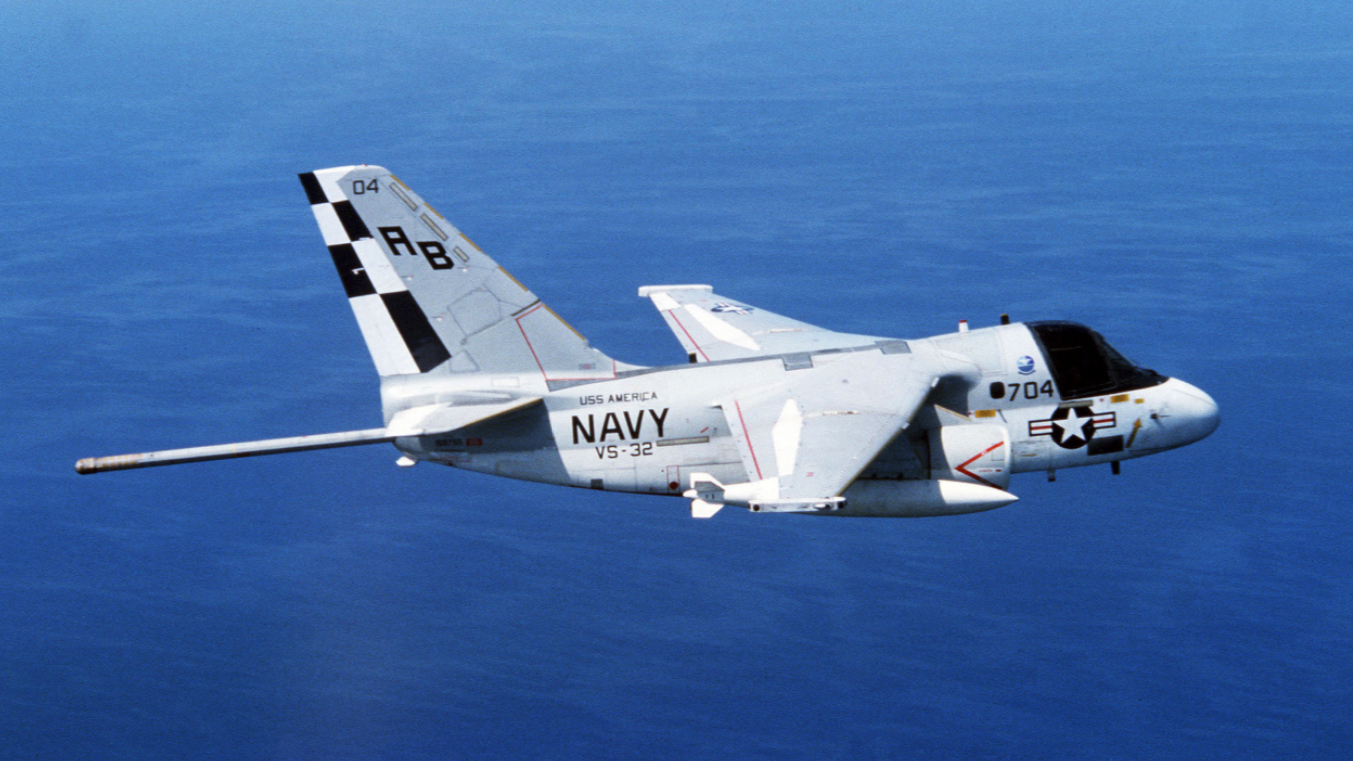
I’m amazed at how many of us forget that two world wars were successfully fought against diesel submarines. Then, as the first decade of the Cold War progressed, we relearned how to fight the diesel submarine’s technological advancements — namely, the snorkel and hydrodynamic streamlining.
Notice I said “signature” above, which implies someone is trying to track a diesel submarine with passive sonobuoys. The first sonobuoys, introduced during World War II’s final years, had relatively good success into the 1950s at tracking diesel-boat propeller noises when the operator turned up successive buoys and listened for the one with the loudest propeller noise. As diesel boats became more streamlined and propeller-blade technology progressed, dropping passive buoys after a target submerged did not work as well. Basically, better boats moved faster than NATO aircraft and ASW ships could drop, tune, and listen to the buoys. Thankfully, active sonobuoy technology was just coming of age, and we were back in the game. Along with active sonobuoys, helicopter dipping-sonar technology was rising to the occasion, and a new fixed-wing/rotary-wing hunter-killer team rose with it.
Operationally, no one in the mid-to-late Cold War attempted to track a submerged diesel submarine passively (where hydrophones listen without the help of any active sonar pulses). That non-use may be contributing to the fearful awe in which we hold diesel submarines today.
Hunting Nukes Vs Diesels During The Cold War
Tracking a nuclear submarine can be relatively easy, depending on how noisy it is. As a lot of open-source material makes clear, nuclear boats always have some form of machinery running. The U.S. Navy and its allies learned early on just how noisy such a submarine can be. There is a great story about how easily SOSUS—the vast U.S. undersea sonar tracking network—detected and tracked the world’s first nuclear-powered submarine, the USS Nautilus (SSN-571), when it made its initial voyage across the Atlantic. It stunned the Navy. From then on, the service worked hard at silencing techniques that would make its boats the quietest in the world. The Soviets, on the other hand, took far too long to appreciate the need for silencing, focusing instead on perfecting their troubled reactors.
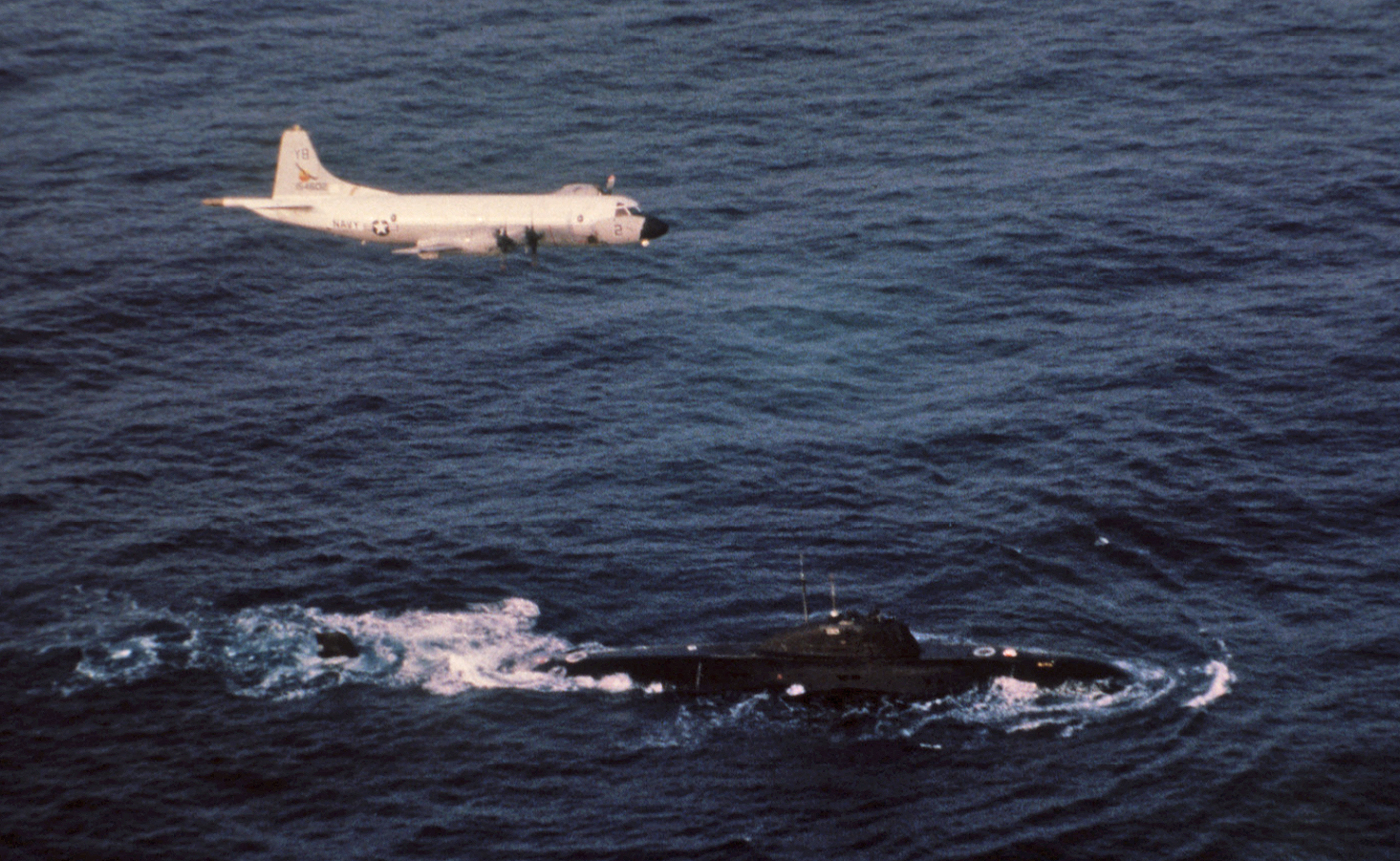
Passive sonobuoys became the way to track nuclear submarines during the latter half of the Cold War. Once you gained contact with a search pattern of buoys, you then localized and tracked the target with an ever-decreasing number and narrowing pattern. This worked very, very well, particularly against noisy Soviet submarines. Reliance on this method, however, would become a liability by the time the Cold War came to an end.
Dropping active sonobuoys on a nuclear submarine was not normal. Doing so would only be used as a last resort, either to refine an attack or as an act of desperation if the damn thing pulled a fast one and disappeared! On the other hand, using active sonobuoys against a nuclear boat could be a planned aspect of an ASW exercise, but time “on top” of a U.S. submarine was precious and rare. In my own experience working with U.S. boats—mostly of the 637/Sturgeon class—I don’t recall ever dropping an active AN/SSQ-62 DICASS buoy on one from my S-3 Viking.
It was almost unheard of to use active buoys against a Soviet nuclear-powered submarine. There’s a Cold War ASW legend that said using active was considered an act of war. I haven’t been able to find anything to support this, but it’s what we were told. I said “almost unheard of,” however. Despite the warning, sometimes permission was given, and it was a great tool to go active on a Soviet boat just to annoy the hell out of them. I never did this, but I have heard the stories of others who did.
A major problem for the U.S. Navy during the Cold War was training. As the nuclear-powered navy took over, diesel submarines quickly attained pariah status, much as propeller-driven aircraft did in the wake of the jet age.
After the Navy’s three Barbel class diesel submarines were decommissioned in the late 1980s — a decision solidified by the tragic fire aboard the USS Bonefish (SS-582) in the spring of 1988 — that was it; no more U.S. diesels. This myopic view affected how well-trained our ASW forces — including nuclear submarines — were when facing a diesel boat in the latter part of the Cold War.
Sadly, I never got a chance to work with one of the Navy’s remarkable diesel subs. I felt completely inadequate with my training and understanding of how to hunt one using active sonobuoys. Even extensive time in the S-3 Viking Weapons Systems Trainer (WST) just did not prepare me for the realities of the active acoustic environment. I shudder every time I think about how poorly I would have done in a shooting war against a Soviet diesel boat.
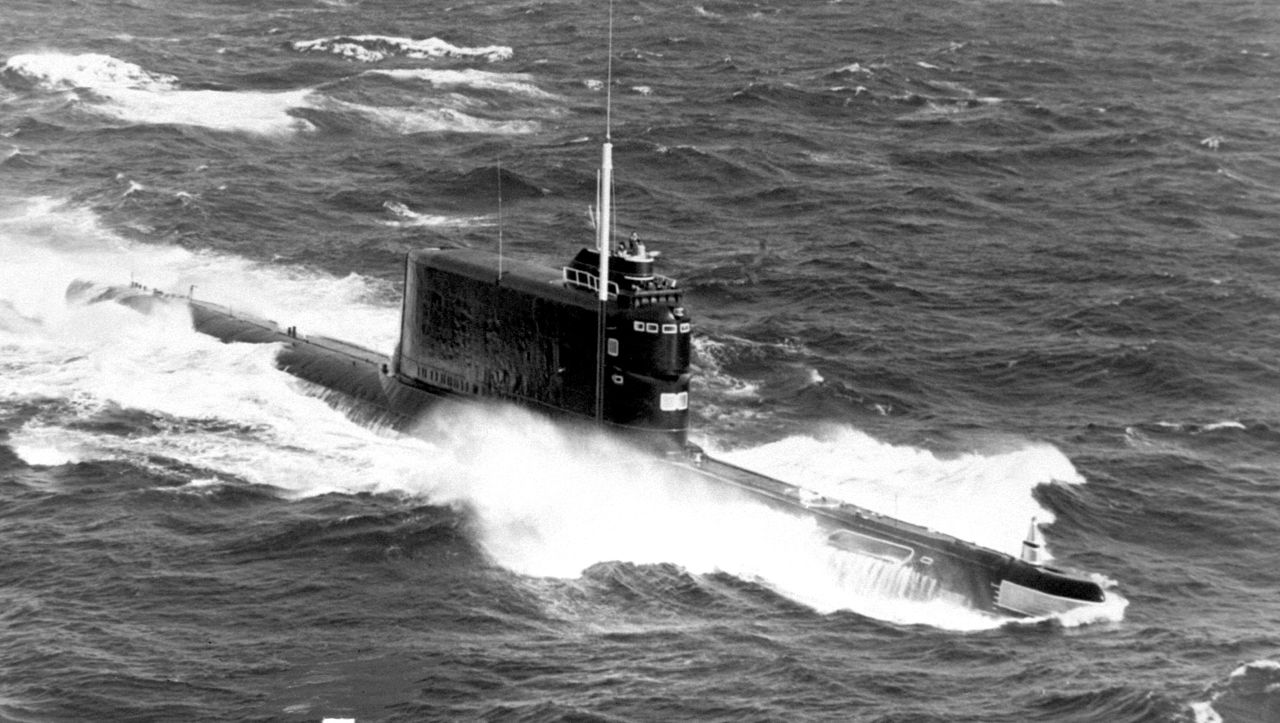
Since the end of the Cold War, the Navy has refused to seriously consider the need for a non-nuclear boat. The lack of such submarines, particularly U.S.-owned and operated ones, hinders effective training, which continues to be an embarrassment for the U.S. Navy as it confronts the rise of China, a resurgent Russia, and the continued proliferation of diesel/AIP submarines.
Oddly enough, on rare occasions, U.S. nuclear submarines try to compensate for the shortfall by running their auxiliary diesel generators for ASW forces while on the surface or pretending to snorkel to simulate a diesel boat. But let’s be honest, that simply doesn’t approach the reality of going up against the genuine article.
Dispelling Myths
So, how much of a myth is it that diesel submarines are impossible to find and then track?
The problem begins with trying to find a diesel submarine. The Atlantic Ocean’s underwater network of passive acoustic arrays — the SOund SUrveillance System, commonly known as SOSUS — was the Navy’s canary in the oceanic coal mine. It was originally designed to detect diesel submarines operating their main engines while snorkeling or surfaced. First-, second-, and even third-generation Soviet diesel boats, transiting into the Atlantic from the Soviet Northern or Baltic Fleets were relatively easy to detect. But in the Mediterranean Sea, there was no SOSUS network to rely on.
Essentially, NATO air, surface, and subsurface ASW forces had to work closely together to keep constant tracks on the adversary. If contact was lost (say, because the boat submerged on electric motors), the nature of the Mediterranean’s acoustic conditions and its concentrated shipping lanes and fishing grounds all contributed to the challenges of regenerating contact. This became substantially more difficult with the arrival of Soviet Tango class diesel attack submarines.
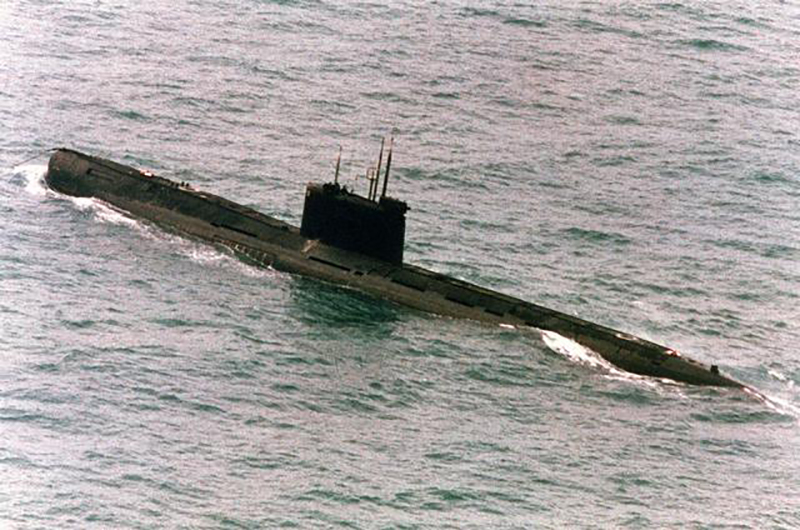
I don’t know much about the success of low-frequency active (LFA) sonar used today. Regardless, even if you find a subsurface contact in this manner, you still have to classify it! A returned ping from the active sonar/sonobuoy I’m familiar with says very little about the source. However, I recently learned from an unclassified U.S. Navy source that the airborne low-frequency (ALF) dipping sonar array on MH-60R Seahawks is capable of identifying a submarine down to its name, by reading its vibration signature as it moves through the water. For an old hand like me, if this is true, then this is incredibly exciting.
Diesel Boats As Hunters
Let me speculate on some factors that affect the hunters and the hunted.
First, the hunted: Diesel submarines have always been relatively small. This affects capacity in several ways. A small submarine has a small power plant and has limited storage for batteries. While battery storage technology is far better than it was in World War II (more on that below), it remains a severe limitation on a diesel boat. There is still no such thing as an operational 30-knot diesel submarine — on primary propulsion or batteries. Running at maximum speed submerged depletes the battery at an exponentially higher rate than the far more efficient five knots or less.
Commander Kaj Toft Madsen, a Dutch submarine skipper writing about the threat in an August 1996 Naval Institute Proceedings article, summarized the propulsion concerns a diesel boat commander faces:
While on patrol, the commanding officer of a conventional submarine always must be thinking of the battery and the amount of energy remaining. In the patrol area, speed seldom will exceed five knots, to limit energy consumption and radiated noise. Reluctant to operate with low battery, a submarine’s CO will take any opportunity to snorkel. It is better to do many, short snorkelings than a few longer ones. Following this policy, the submarine will never be caught low in stored energy, lacking the ability either to evade or to attack.
“Many short snorkelings” has a very pleasant sound to the ears and eyes of an airborne submarine hunter. This means there are many more opportunities to detect the snorkel and other masts with non-acoustic sensors (and depth-changing transients for passive acoustic sensors).

A recent article describes how partial or complete loss of GPS during a conflict (by spoofing or outright destruction of GPS satellites) might affect submarines. While they primarily rely on inertial navigation systems (INS) and quick, supporting GPS fixes when they come to periscope depth, during wartime, loss of GPS would force them to find another source to corroborate information provided by the INS. The article describes how to use a periscope as a sextant. But this type of periscope exposure, however brief, would provide an additional opportunity for an ASW aircraft to obtain radar contact.
And there is nothing like a “radar-sinker”— a submarine that is detected on the surface but submerges quickly once it realizes it has been detected — to induce extreme salivation in the mouth of a hunter.
The size of a diesel boat also affects how many and what types of sensors are available. The smaller the hull, the smaller the acoustic arrays used for finding targets. Acoustic array size can affect the sensor’s range and sensitivity. How many sonar techs on the sub does it take to monitor the various active and passive arrays as well as the towed array? How about the system that monitors the submarine’s own noise levels or the active sonar intercept screen? How much space do all the sensors’ processors take up? All these are critical factors that decide how well a diesel boat performs its mission.
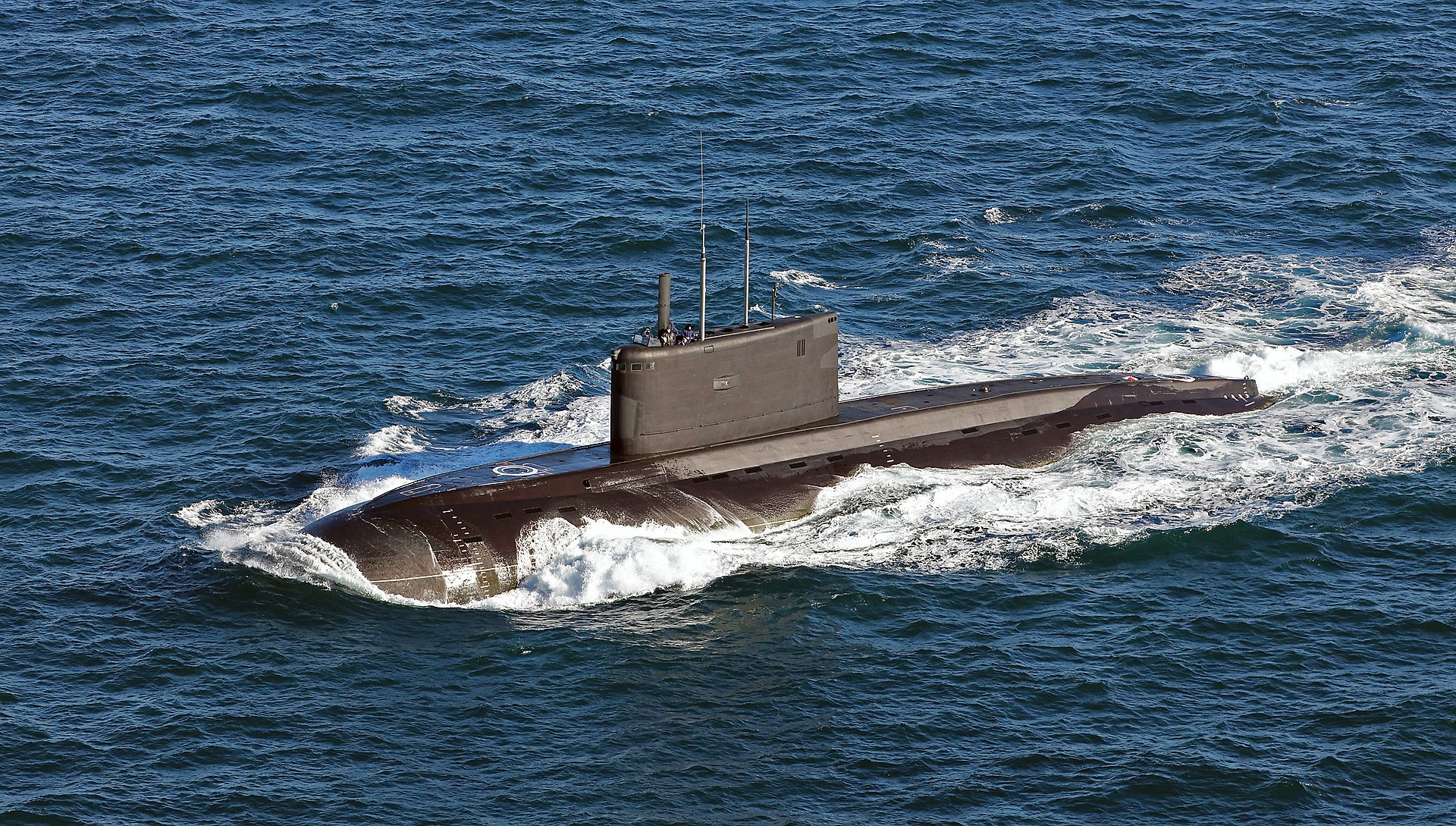
A diesel submarine’s compact size is a major attraction for smaller navies because of the exorbitant cost of nuclear submarines, in terms of both sticker price and maintenance. Unfortunately, a navy’s smallness also affects its place in the world, which means its intelligence network isn’t as extensive as a larger one’s might be. Thus, an Indonesian Navy Type 209/1400 might have to spend more time at periscope depth looking for its prey, as opposed to an Australian Collins class that might know precisely where its target is from well-networked intel sources.
Diesel Boats As Prey
If the factors against the hunted are challenging, the hunter faces an environment far worse. Let’s return to size, because size does matter. Amid the disadvantages a small submarine brings, it offers some critical advantages as well:
First, it is small. An active sonar pulse, particularly a high-frequency ping, tends to lose energy quickly in the water. A smaller target will reflect less energy. That energy will then be depleted even more on the journey back to the transducer/receiver.
Now add to the equation a submarine covered with anechoic tiles or coating, and you essentially get mush—a very mushy return on your screen (if at all). Then, consider some old-school variables amid the constants: A submarine skipper is going to present the smallest aspect of his boat to the active sonar, particularly if there is only one active source. He is going to create environmental decoys — such as a knuckle, where he’ll turn abruptly or put the rudder over to starboard and then to port leaving a large disturbance in the water — for a ping to echo against. Or he may sprint forward and then back the boat into its own wake.
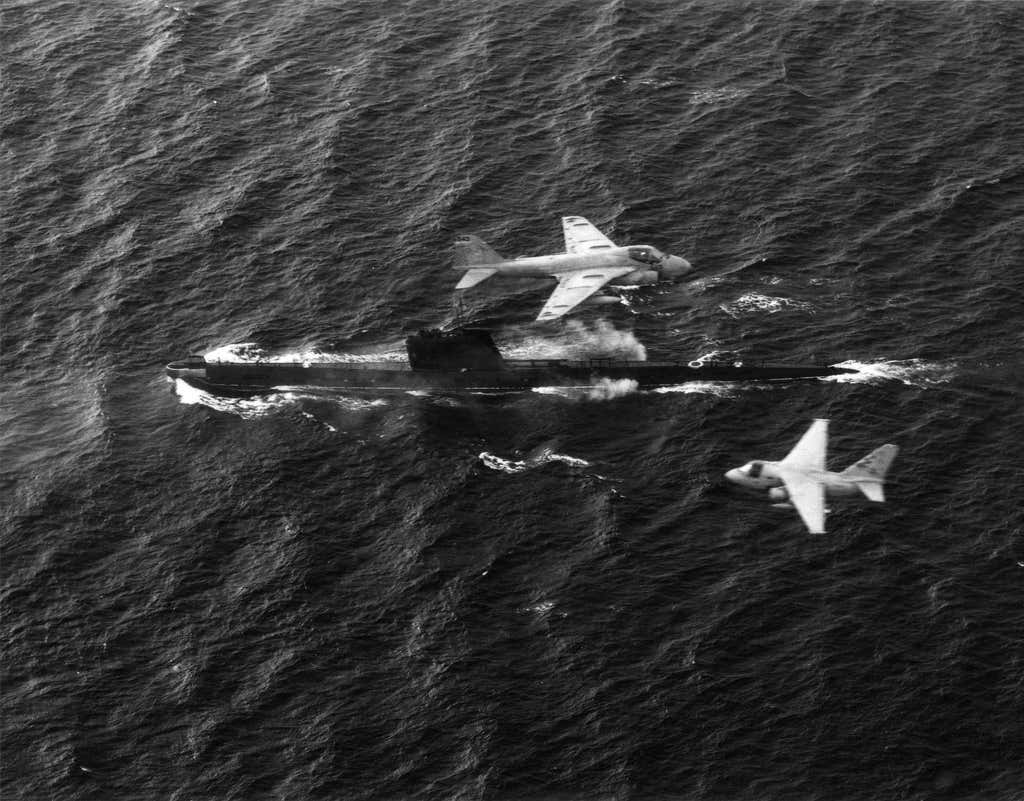
Second, the hunted gains significant home-field advantages, since diesels tend to hang out in friendly littorals. You can be certain that an enemy diesel skipper will be intimately familiar with the seasonal and daily variations his acoustic environment offers. Shallow coastal water is a notoriously difficult environment for active, passive, and even non-acoustic sensors. Bottom composition, shoaling, currents, outflow of fresh water, weather, and biologics are all tantalizing security blankets a small submarine can wrap itself in.
A third consideration is a skipper’s willingness to hide the submarine’s snorkel or surfaced hull among a host of environmental and man-made distractions always found on the surface. Non-acoustic searches are complicated by an abundance of radar contacts of all shapes and sizes, such as fishing boats, pleasure craft, barges, merchant ships, and navigation buoys. Fog, heavy seas, thunderstorms, coastal influence, and daily temperature variations are environmental changes that can encourage a diesel boat to take risks, greatly affecting an ASW aircraft’s acoustic and non-acoustic performance.
One point in particular: Diesel skippers know how to hide among their nation’s fishing vessels. However, submarines tend to get caught in the nets of fishing vessels used by various types of fishing boats, so operations with a willing and organized fishing fleet require exceptional coordination and training. Since most fishing boats have diesel engines, the submarine’s skipper can run his own knowing that an ASW sensor operator will have a difficult time picking out one engine from, say, 27 others.
Finally, the U. S. Navy hasn’t adapted its ASW weapons to shallow water operations. It has, however, been providing adversary submarines operating in the shallows with an advantage since the 1970s, despite the major end-of-Cold War philosophy change that moved the fleet from blue water to the littorals. We simply didn’t — and still don’t — have ASW weapons that are most effective in this environment. The benefits offered by the Mk 54 air-dropped and surface-launched torpedo over the Mk 46 still can’t defeat the horrendous acoustic conditions common in the shallows. We’ve put all our eggs in this basket and, considering the notorious performance of torpedoes in every war in which they’ve been used (resolved only late in the conflict, or not at all), we are putting our ships at great risk.

Here is where the Russians and some of our allies have us beat. For our surface navy, we need to come up with a system similar to the Russian RBU-6000 anti-submarine rocket launcher. Better yet, we should support our friends and purchase Sweden’s ASW-601, or bring back a simple, inexpensive system like the ol’ Hedgehog. The benefits of this system also include mine countermeasures and an anti-torpedo defense, both of which our warships need.
For our aircraft, we need a simple, inexpensive depth charge that is similar to a Hedgehog device — bomblets, perhaps, such as an ASW version of the Mk 20 Rockeye cluster bomb. This would also mean developing a more effective magnetic anomaly detector (MAD) boom/bird to deal with a submarine in this environment. Funny how we seem to need to go back-to-the-future in 21st-century ASW.
Oh, one more critical thing: The closer the hunter gets to an enemy coast, the greater the threat of enemy fighters, SAMs, and anti-aircraft guns.
Finally, the most serious advantage we give to an enemy diesel submarine is our lack of realistic training. This was and continues to be the major problem.
It is embarrassing to have to hear it from a fellow sailor playing the part of our enemy. We had a chance to listen back in August 1978 when the XO of the USS Barbel (SS-580), Lieutenant Commander William Marks, spelled it out for us in a brief, passionate piece in the Naval Institute Proceedings.
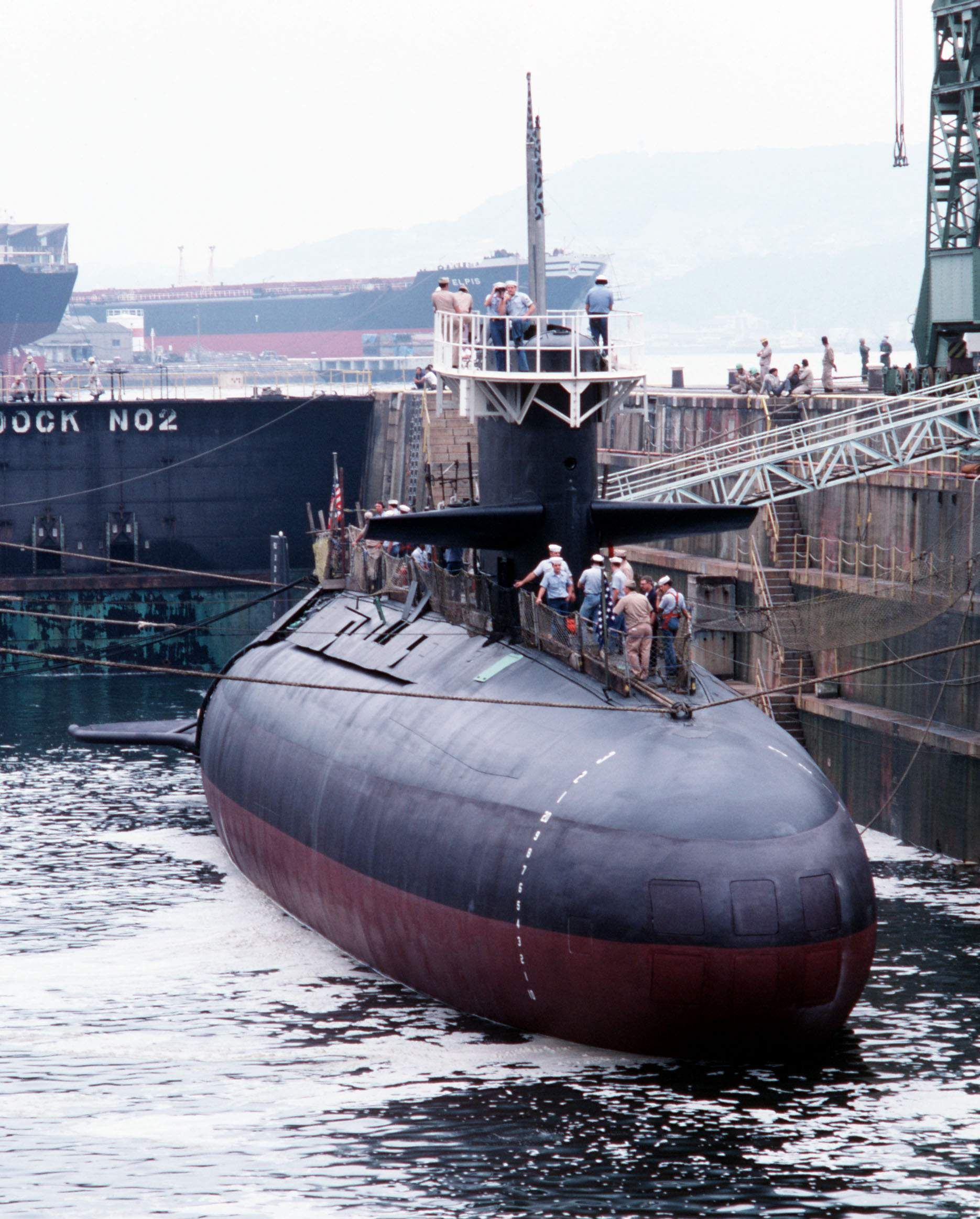
He starts off by reminding us that strategists and planners have failed historically to consider what an actual enemy will do during a time of war and translate that into realistic, effective training. He applies this truth to how we prepared for battle against Soviet diesel submarines: “The most obvious failing in training involves the exercises in which the diesel submarine is forced, by the operations order, to operate in a manner exactly the opposite of what a prudent submarine commander would do.”
Pulling no punches, he then went after the jugular of the primary transgressor:
Naval air ASW forces are the worst offenders of this apparent “head in the sand” training. By operational directive, naval aviators place the diesel submarine in a small circle, in deep, convergence zone water, devoid of merchant traffic or fishing craft, direct daylight snorkeling and predictable snorkel cycles, and top it off by labeling the exercise “freeplay.”
He didn’t accuse us of trying to hide our ineptness or cook the books to look good because we would get an easy kill. Instead, he blamed us for not challenging ourselves to face what we would really see if we engaged the Soviets in a war at sea:
We ought to train against the real diesel submarine threat—in shallow water, near beach noise and fishing fleets. We ought to train in darkness and over vast areas. We ought to train against aircraft crew boredom and disappointment. We ought to train against the uncertainty that a submarine really is there. We ought to train against realistic aircraft maintenance and sonobuoy assets. We ought to train against aircraft crews who are fatigued. And, finally, we ought to train against a diesel submarine that is permitted to exploit the environment to her advantage.
He was a decade ahead of the Navy in pushing us to look a whole helluva lot harder at the littorals where the Soviet diesels were most assuredly going to wait for us. He is essentially saying, “It’s the chokepoints stupid! It’s the straits, the entrances to the ports of departure and arrival of the convoys, the naval bases, the GIUK gap, the entrance to the Fjords!”
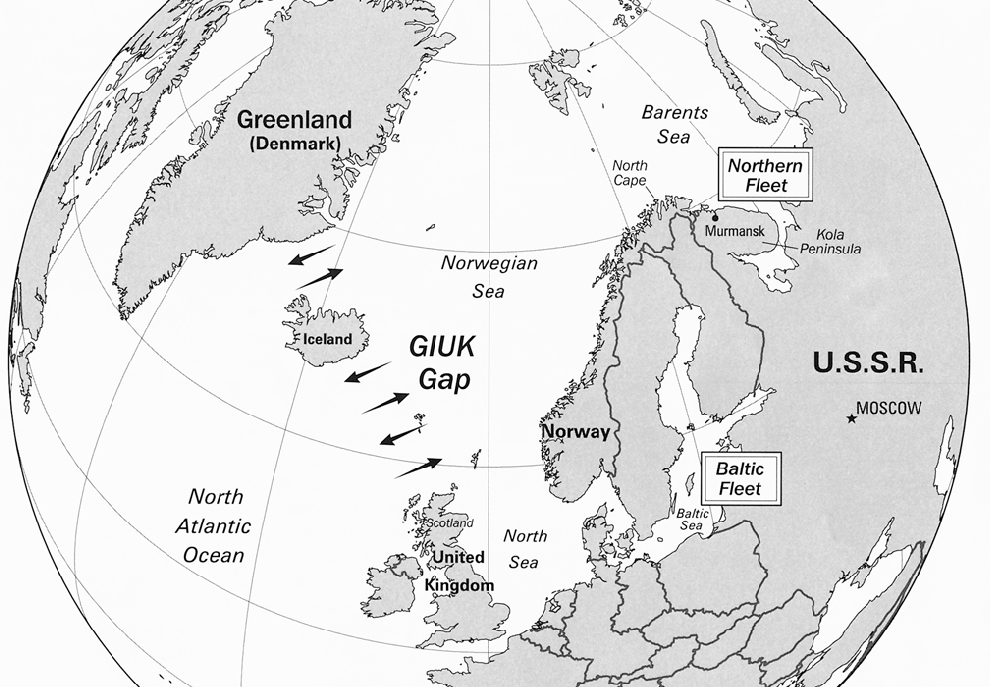
Post-Cold War analysis of the Soviet Navy’s plans, not to mention what analysts were saying while reading the Soviet naval journals during this period, confirmed this.
Of course, many probably stopped reading Lt. Cdr. Marks’ article early on because he used the D word, mentioning the Navy’s decision not to continue to build diesel boats and how it affected our ability to effectively train against the non-nuclear submarine threat.
Marks then proceeds to drive a stake through the heart of NAVAIR’s bastard children — Air ASW: “If we’re going to run highly structured, pro-aircraft exercises then let’s call them that so we can accurately assess all our capabilities.”
Ouch! He then calls for exercising realistically by forcing us to go in blind and find a diesel boat where a diesel boat might be, under conditions that are real, complicated, and very difficult to work with.
He concludes with a necessary insult:
Then, after several such exercises, let us examine again our ASW capabilities against the Soviet diesel submarine. I’m certain one conclusion we can safely draw is that the Soviets need not invest any money in the development of a diesel submarine-launched antiaircraft weapon, until such time as a valid air threat exists.
Ouch — fucking OUCH!! Thank you, XO! And thank God for such bitching-and-moaning realists.
Sadly, as I’ve said before, we didn’t listen. The three Barbel class boats could not properly fulfill the need to train every ASW crew in both Atlantic and Pacific fleets and all carrier air wings and patrol squadrons. Once again, I never flew against a Barbel, and most of us only saw a diesel boat in a major, very structured exercise during deployments to the Med or the fjords. Let’s hope to God our women and men in ASW are being prepared for the South China Sea.
How To Find A Diesel Boat From Above
Now I’ll attempt to describe how we dealt with an exercise diesel boat (with respect to the Barbel’s XO): The submarine “pulled the plug,” retracting its snorkel/periscope/masts when its electronic support measures (ESM) system detected a sweep of the S-3A’s AN/APS-116 radar. This is the classic radar-sinker. And yes, I mean a single sweep, depending on the specifics of the encounter. As the SENSO, I am running the radar and declare the loss of contact. The TACCO (tactical coordinator) sends my last radar fix to the pilot’s display and he turns our aircraft to the heading so we can mark on top (MOT) of that geographic position. The COTAC (copilot/co-tactical coordinator) makes a radio call to any ASW assets we are working with, such as a frigate trailing a towed array sonar, or the battle group ASW commander known as Alpha-Xray to inform them of a possible submarine contact.
If the submarine or its masts weren’t seen visually (or imaged, should this have been a scenario in the S-3B using the AN/APS-137 ISAR radar) as we approached, we would instinctively drop a passive sonobuoy to classify the contact, unless there was a clear indication it was a diesel boat. Such indications could include exhaust smoke still visible around the area where the mast’s feather ends; sonobuoys already seeded in relatively close proximity that show a very distinct change on the display; or “lost contact” called by an escort that had passive contact on a possible diesel submarine’s engine signature. If this is the case, then we would drop AN/SSQ-62 DICASS buoys — equipped with active sonar — in a prearranged pattern.
In the Viking, I could monitor multiple active sonobuoys at one time. Normally, though, we dropped just two at a time to conserve them (because of their cost and because we carried so few). As the hydrophone dropped to initial depth, I would begin pinging to determine if we had a subsurface contact and see if they were still “above the thermal layer.” If no return after a few pings, the TACCO would “send the hydrophone” to its maximum depth, below the layer.
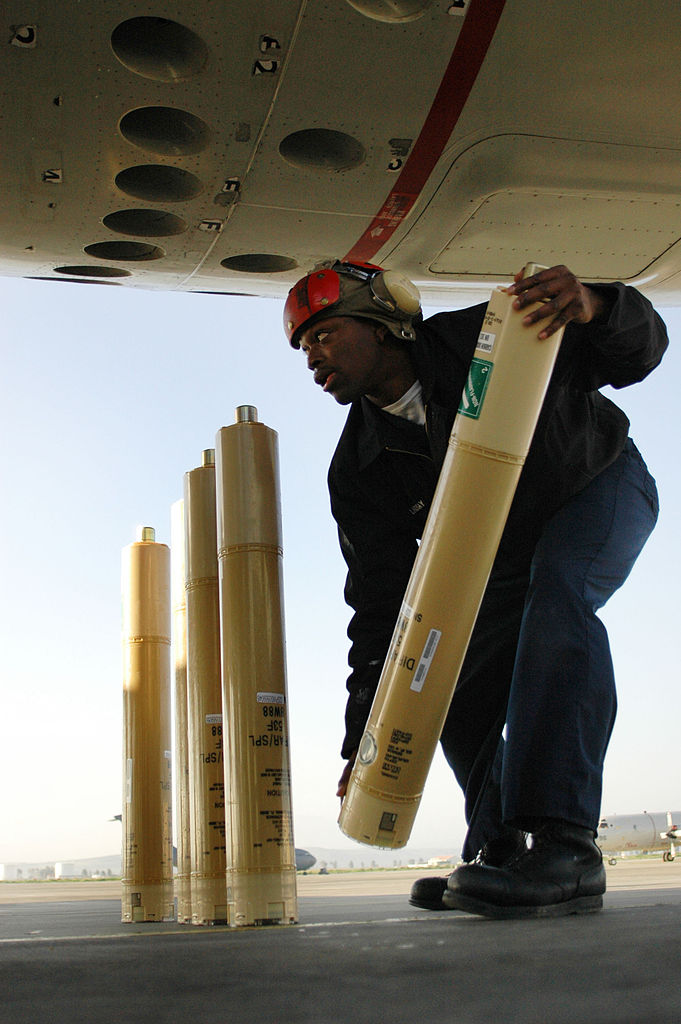
Due to the inherent delay of computer processing of information, it was absolutely critical to have the sonobuoy tuned up to my headset so I could listen in real-time. If a submarine was there, I could hear the echo in my helmet before I saw it on my display. To get a solid return echo on the first ping from the first buoy was a sound to behold!
Now, the trick was to maintain contact as the other buoys were being dropped. This is where enlisted sensor operators realized we were playing a game of chess with the skipper of the submarine, mano a mano. Of course, we couldn’t do it without the crew and the airplane, but this was the true moment for us, I think.
It was you against him.
As the ping emanated from the sonobuoy’s transducer and displayed across my screen, I’d begin calling doppler, buoy number, range, and bearing while marking the return. The nature of the return depended on all the tactics I described above. It was something not only heard, but also felt by the SENSO’s own physical senses as his eyes analyzed the target’s “image” on the screen — usually just a horizontal line to the untrained eye. As I marked a return, the TACCO and COTAC’s screens were provided with an initial symbol generated by the active acoustic portion of the software. The TACCO could then “merge” all the tracks from other sensors and update the Link 11 tactical datalink so every asset throughout the battle group can see a common “picture” of the situation.
As more buoys started transmitting, I would ping them as well. I needed to keep the submarine boxed in with sound. The additional buoys provided a solid fix with visual lines of bearing extending from each of their symbols on the TACCO’s screen.
We played the game as long as necessary, but active sonobuoys were extremely expensive, and we didn’t waste them. Besides, were it a real threat, the initial solid ping returns and fixes usually met the criteria for a torpedo drop.
That was easy.
But if you recall, I did start by saying ASW against a diesel boat is assuredly difficult.
No good skipper is going to tolerate more than a few pings before he slips away, and our subsequent active pulses will just spread longingly out across a now seemingly empty, echoless ocean. Thus, it is always better to invite friends. Another Viking, carrying the same amount or more active buoys (and torpedoes, if we weren’t armed) should have been vectored to us by the E-2 Hawkeye. Far better, you hoped you were within range of a couple of Sea King ASW Helicopters.
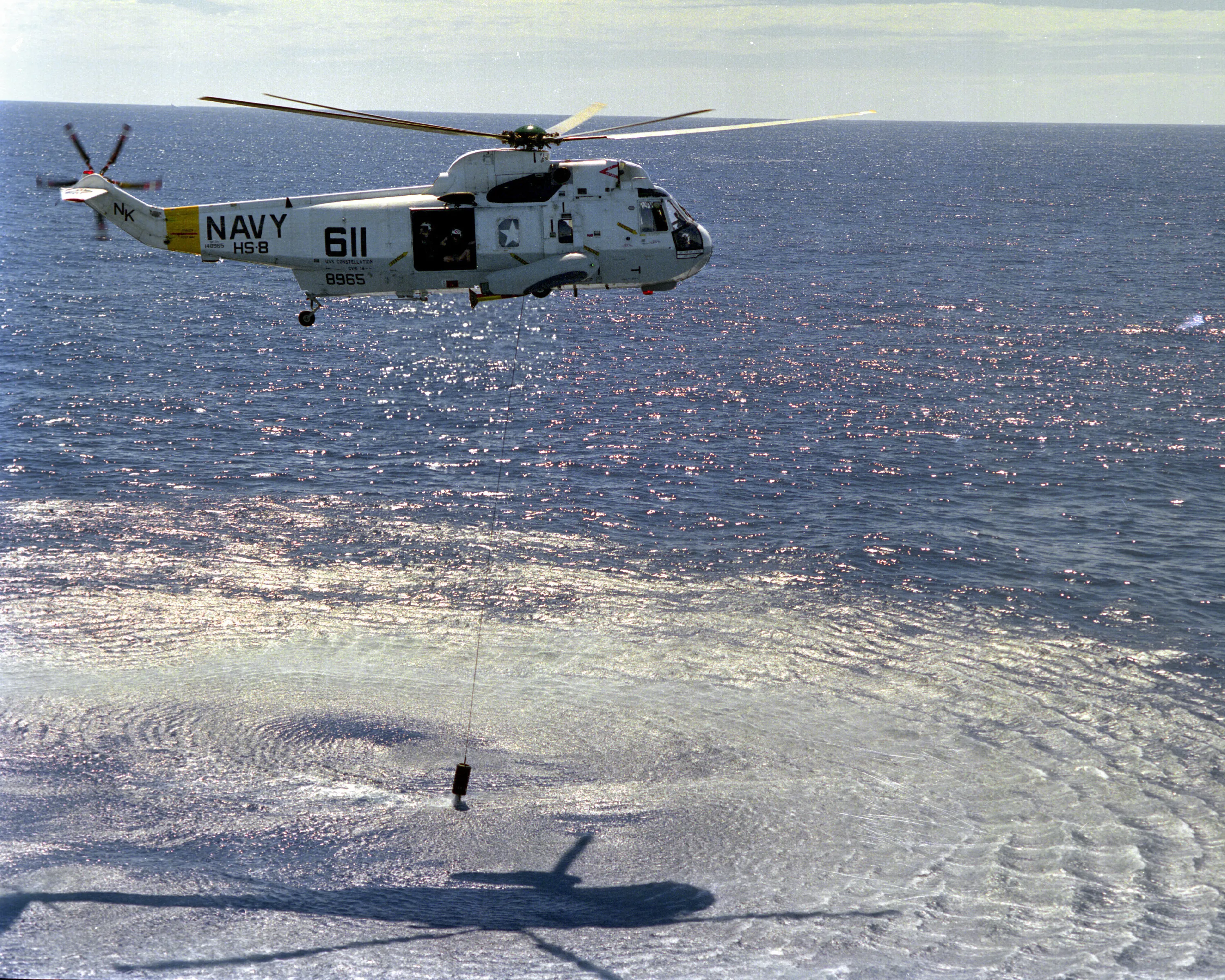
The arrival of two SH-3s always made the evading submariner’s life expectancy questionable. Of course, during wartime, we would also hope to hear the distinct end-of-life sounds emanating from the submarine amid the reverberations of a Mk 46 torpedo explosion.
Necessary sounds … but for me, they would have been the saddest sounds I could ever have heard.
AIP: What The Well-Dressed Navy Is Wearing
Now, about those AIP (air-independent propulsion) submarines. For me, AIP boats have always been something of a mystery. During my time in ASW, the Stirling engine was the only AIP system in use (other than nuclear), and that was a curiosity. I never flew an ASW mission against one. In my ignorance, I was thinking: “Why all the fuss and worry? A turbine and its associated drivetrain, running submerged, make enough noise to track passively. And a diesel engine? Completely submerged? That’s the loudest noise in the world! What are we so worried about?”
Then I read two excellent books AIP boats—Submarine Technology for the 21st Century (2nd Ed) by Stan Zimmerman (Trafford Publishing, 2006) and Quieter, Deeper, Faster: Innovations in German Submarine Construction by Jurgen Rohweder (Maximilian Verlag, 2017) — and now I know what we are worried about.
I won’t go into the history of the design and development of AIP systems, because plenty has already been written about it. Instead, let’s talk about their scary strengths and exploitable weaknesses — if they have such weaknesses — and then I’ll offer some of my own ASW-oriented thoughts.
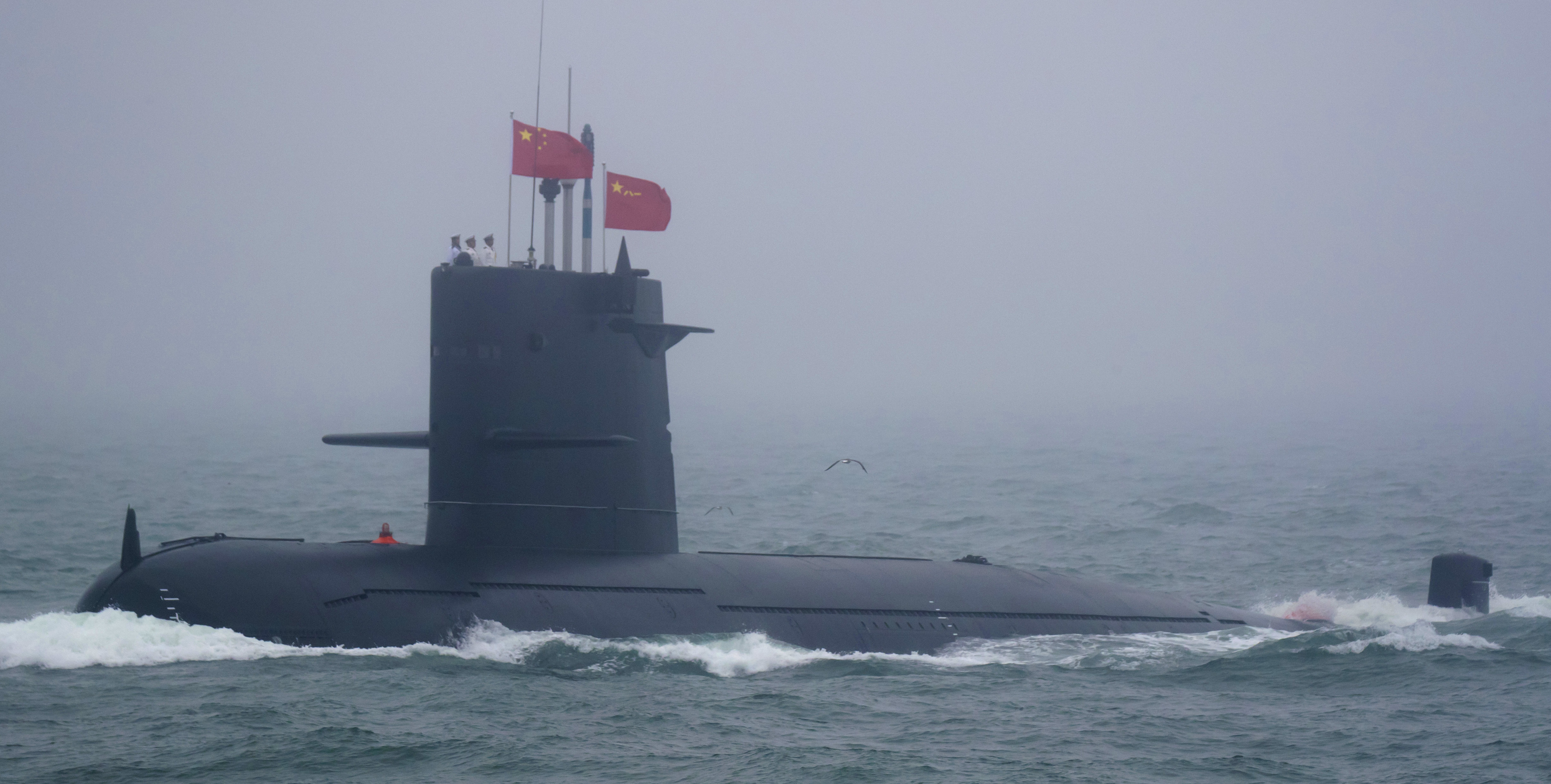
The nuclear submarine’s unchallenged superiority in endurance and sustained speed is an exciting and effective foundation for any country’s perceived or realistic naval needs. However, the prohibitive costs of acquiring and maintaining nuclear-powered attacks submarines (SSNs), as well as a litany of other political and regulatory factors, prevent most navies from building their maritime strategy on the bedrock of such a design.
AIP is the obvious alternative, and the choices available offer many benefits, including creating a massive headache for historically dominant navies that don’t like to have their sea power certitude challenged.
So, let’s look at three AIP options here: closed-cycle steam turbine, the Stirling Engine, and the fuel cell, as well as consider the newest upgrade to underwater power — lithium-ion batteries.
Steam Turbines
The closed-cycle turbine is similar to a nuclear-powered steam turbine, except burning ethanol generates the heat instead of a nuclear reaction. While several navies experimented with it, only the French committed themselves to its development for submarines—the MESMA, or Module d’Energie Sous-Marine
Autonome system. The French-designed Scorpene class, which several navies have acquired, can employ a MESMA turbine. The Agosta 90B class submarines, like the ones Pakistan operates as the Khalid class, also use MESMA. Some sources suggest this AIP system has an endurance of around 16 days at four knots without the need to snorkel.
One of the important benefits of the turbine is its ability to maintain a constant speed for all aspects of the submarine’s performance, because it is connected to the electric motors through an alternator, whereas a closed-cycle diesel must vary its RPMs. Not much is known about the performance and success/failure of the MESMA system. The apparent weaknesses are that the turbine isn’t very quiet, and an excessive amount of exploitable heat is produced.
Stirling Engines
The Stirling Engine is a very well-known system that has been around for more than two centuries. Famously, Sweden’s Stirling-engined submarine Gotland made an enduring mark on the U.S. Navy.
The first full-scale submarine Stirling engine was added as a “plug,” or hull-section, to the Kockums’-built HSwMS Näcken in the mid-late ‘80s. The engine’s quietness surprised its designers and the Swedish Navy. In the Stirling cycle, the fuel is continuously burned, whereas, in a diesel engine, the combustion is an explosive, noise-generating process. In fact, the motive machinery associated with the Stirling revealed itself to be much noisier than the combustion. Thus, Kockums’ engineers had to ensure that all machinery mounts were placed on rafts to reduce detectable vibration through the hull.
Reported submerged endurance varies, but sources indicate anywhere from 14 to 30 days. The liquid oxygen (LOX) required for combustion of the diesel fuel is located in stainless steel containers that “are the most expensive part of the Stirling AIP system,” according to Zimmerman’s book. The Swedish Navy continues to trust the Stirling system and has incorporated it into its new and provocative Blekinge class submarine (A26 program).
Other countries use a Stirling system, too. The Japan Maritime Self-Defense Force (JMSDF) uses it in the Soryu class, the Royal Singapore Navy in the Archer class (formerly the Swedish Västergötland class), and the Type 039A Yuan-class submarines of the Chinese Navy also employs it.
The Stirling engine has several inherent weaknesses that might contribute to operational constraints. According to Zimmerman, one can be found in the atmospheric limitations of its combustor, which prevents Stirling-powered submarines from diving deeper than 650 feet. Of course, in Swedish waters and the Baltic littorals, this may not be a problem. Also, it “cannot accept radical changes in power demand.”
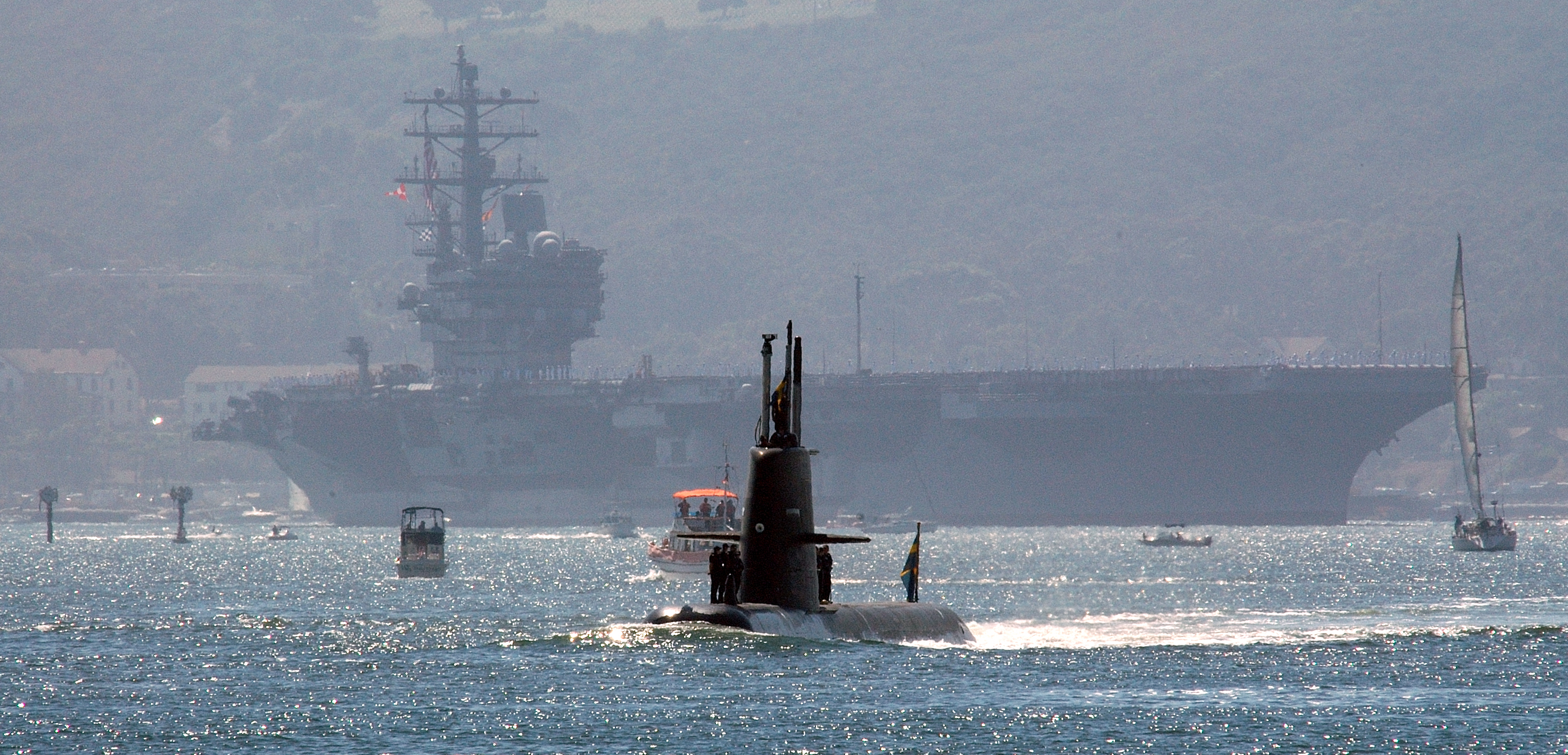
Like the MESMA turbine, Stirlings apparently produce an exploitable heat signature. Finally, according to Jurgen Rohweder, “The engine’s efficiency is significantly lower and fuel consumption correspondingly high. This is the most probable reason why most of the countries experimenting with the Stirling engine have abandoned it at the end.” Perhaps it is a contributing factor that influenced both the JMSDF and the Royal Singapore Navy’s decision not to include the Stirling in their newest submarine designs: the Taeigi class and the Invincible class, respectively.
There are a few additional weaknesses to AIP technology. Most important, AIP is expensive. And the nations developing AIP have not become completely committed believers in the technology — none has created a submarine solely powered by AIP. I get that it is designed for those moments when a submarine needs to be a submarine. But the diesel engine and batteries required for routine, safe cruising in and out of port and patrolling when AIP use isn’t important, take up a significant amount of space, add a tremendous amount of weight and size to the design, and cost that much more money.
Yes, almost all nuclear submarines do have an auxiliary diesel engine and battery compartment (with the interesting exception being the Soviet Navy Papa class SSGN), but comparatively, it is substantially smaller and used only in emergencies or while in port.
Fuel Cells
Now, the system that has transformed the painful headache experienced by ASW forces into a migraine is the fuel cell. There are many types and several countries are developing them, but I’ll focus on German Type 212 and 214 submarines.
“The fuel cell has evolved into an electrochemical device producing electricity without combustion,” writes Rohweder. “The electro-chemical reactions between fuel and an oxidant, which leads to the direct production of electricity … and the greatest progress has been made with the reaction between hydrogen and oxygen.”

Fuel cells are highly efficient, and they make absolutely no sound. Most of the heat produced by the chemical reaction is employed by the system to extract hydrogen from the metal hydride storage containers. The rest is discharged overboard but apparently leaves a minimal signature.
Unlike lead-acid batteries, the fuel-cell system requires no maintenance while at sea (only monitoring). This point alone has a multilayered impact: With a reduction of crew, you have a reduction of crew weight; you have a reduced need for supplies (which take up space); and the actual space for those crewmembers to live and work leaves room for critical sensor and weapon systems as well as machinery. The diminished reliance on snorkeling means there is less stress on the crew, thereby allowing for greater focus on the submarine’s tactical mission.
Reports of fuel-cell submerged endurance vary, but the standard response is 14 days. However, three to four weeks is commonly accepted, with some claiming up to eight weeks! The fuel cells allow for high sustained underwater speeds and, in conjunction with the batteries, such as lithium-ion technology, those rates could be maintained in a manner that can wreak havoc on any surface fleet.
The ASW migraine is only enhanced by a new generation of electric motors. “Advances in solid-state power conditioning equipment and rare-earth magnets are creating an electric motor half the size and weight—for the same output—as conventional units,” writes Zimmerman. The winding we are so used to in electric motors has been replaced by permanent magnets (PM). The Type 212 submarine (used by the German and Italian navies) and the Type 214 (used by Greece, Portugal, and South Korea), use the Siemens Permasyn PM Motor. This motor, says Jurgen Rohweder, “has particularly low vibrations and emits little heat and noise, which together further contribute to a submarine’s undetectability.”
Lithium-Ion Batteries
The lithium-ion battery (LIB) is the latest technology being applied to diesel submarines. More than just a much-desired replacement for the standard lead-acid battery (LAB), Japan has been working to perfect the LIB for much of the 21st century.
Clearly, with the launch of the second Taigei (“Big Whale”) class submarine, the Hakugei (“White Whale“), a few weeks ago, the JMSDF is comfortable with the performance and safety of the technology; so much so, that it will no longer rely on the cumbersome Stirling engines that provide AIP propulsion for their previous boats, the Sōryū class.
Indeed, lithium-ion batteries could allow some navies to dispense with all the complexity, weight, and, in some cases, the detectability of AIP machinery altogether. In essence, the LIB technology represents the dream of what a diesel-electric boat could possibly be. Depending on the needs of the navy, they offer their own kind of replacement for AIP technology, allowing for much longer dives than their LAB-equipped brethren, all without the complexity of having a separate AIP propulsion technology on board, although they do have unique fire suppression and other requirements.
Compared to AIP and LAB submarines, LIB cells can also take up considerably less space, allowing for more cells in compartments already allocated for batteries. Or, since space is always at a premium on a submarine, the area planned for an AIP plug can now be used for additional sensors, special operations capability, crew spaces, additional weapons, or even more batteries.
ASW crews love to interrupt a diesel boat that is surfaced or snorkeling to recharge its batteries. A LAB submarine needs, ideally, an uninterrupted half an hour — up to several hours — to obtain a full charge, depending on the quality of the batteries. Forcing the submarine to completely submerge when it has only attained, say, a 36 percent charge creates a difficult environment for the skipper. How long will the ASW force keep me down? Will I be interrupted again? With only a 36 percent charge, can I realistically get away from a determined hunter? If a torpedo is in the water, how long can I maintain speed to evade the weapon?

Unfortunately, “interrupting” a submarine with lithium-ion batteries is very unlikely. LIB cells recharge at a significantly faster rate than LAB cells. They also can discharge a greater amount of energy, which translates into higher speeds, and the batteries will maintain that high level of energy even as the charge is depleted. This allows the skipper to get away from or pursue a threat, even a nuclear submarine — if the conditions are right. Also, the investment a navy makes into lithium-ion technology is rewarded by the fact that the batteries keep most of their fast-charging ability and high-energy output throughout their lives.
LIBs can also be paired with existing AIP technology to dramatically increase the capabilities of these already remarkably capable boats. This is exactly what South Korea is doing with their KSS-III Batch 2 submarines. Navalnews.com reports that Moon-hee Jang of Hanwha Defense says the new configuration will last 300
percent longer at full speed and 160 percent longer in cruise mode, also adding:
“Batch-2 submarines will have both AIP propulsion systems and lithium-ion batteries, which will increase the submerged endurance to more than 20 days at sea.”
And it’s possible that the AIP system can charge the batteries while submerged. That is a stunning performance boost for a diesel-electric submarine, and the pairing of the technologies offers incredible flexibility that would greatly complicate a submarine hunter’s mission.
Finally, a very critical point is made by the authors of this article encouraging the U.S. Navy to have a serious talk with the Japanese regarding LIBs: “All navies are rapidly developing and integrating large fleets of battery-powered [unmanned] submersibles.” As the U.S. Navy pursues unmanned air, surface, and subsurface vehicles, the use of Japanese-developed LIB technology can only enhance their performance and reliability.
Of course, AIP or advanced battery technology alone is not enough for submariners! Advances in propellor-blade technology and hydrodynamic hull designs (which, added to fuel cells’ capability for high speeds, allows for excellent sprint-drift operations), demagnetized hull materials, anechoic coatings, and sensor and weapons capabilities (including the submarine-fired SAM), and I think today’s ASW crews might be fucked.
New Means Of Detection
Not long ago, I read an article co-written by a retired admiral who happened to have been a naval oceanographer. He was describing the need for the Navy to start paying closer attention to non-acoustic means of detection of submarines, particularly the effects of bioluminescence. Navy Cdr. Rob Brodie and retired Rear Adm. Tom Donaldson illustrated how “light produced by disturbed bioluminescent plankton is an ocean signature; a submarine cannot prevent the ocean from glowing.” The authors recommend that the Navy equip all ASW platforms, particularly unmanned drones, with low-light sensors and advanced processors with AI technology to decipher and alert sensor operators to highly potential submarine contacts.
We must take the non-acoustic possibilities very seriously. The Russians have been studying a wide range of non-acoustic options for decades in the face of their comparatively poor passive acoustic capabilities during the Cold War. They and most likely the Chinese are light years ahead of us.
This leads to some of my own thoughts about how to meet the threat:
– Unmanned underwater vehicles (UUVs) are already being deployed by submarines from all navies. ASW sensor operators need to be trained on every type of UUV and their passive acoustic signatures, as well as what they sound like in real-time. UUVs will have unique signatures, and navies may not be investing money into the quieting of their machinery for the moment. If an operator can acoustically classify a specific type of UUV known to be launched from a submarine, then she has also localized the threat, the mother submarine.
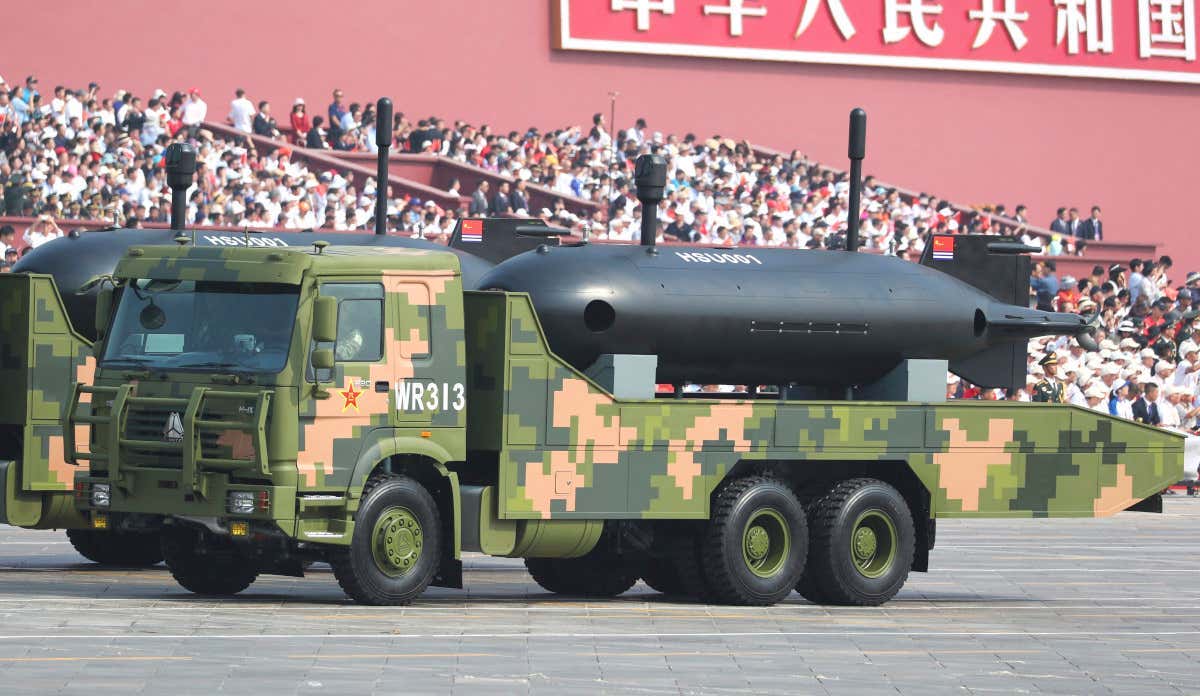
– The defense industry needs to help us hear better. We need better processors that can pick out a slow-revolution, seven-skewed-blade propeller from a field of very loud biologics and peripheral shipping noise. We need airborne, surface, and subsurface operators well trained in listening to the sounds an ocean makes. I’ve said it before, but I was poorly trained in “aural” acoustics, and it seems the developers of the newest processing equipment were neglectful in providing enhanced, real-time listening capabilities (probably because we weren’t taking it seriously).
– I would encourage the Navy to require all junior submarine Sonar Techs (STs) to do at least one patrol (or a couple of weeks during at-sea training periods) on a ballistic-missile submarine (SSBN), early in their careers. There, they can listen to sounds expressed by the ocean for hours on end. Unlike attack submarines, SSBNs spend a significant amount of their time boring holes in a limited part of the ocean, which provides an ideal training environment for the STs. Doing this type of listening, I believe, would create “muscle memory” for them to be able to aurally differentiate the slightest acoustic change that an extremely quiet fuel-cell submarine or distant UUV would bring.
As our resident undersea warfare expert has said: “Sonarmen are trained to detect changes in patterns. A sharp metallic transient object is out of place in the natural undersea world … The experienced sailor can quickly identify these changes.” In the comment section of that article, he makes a key point: “Finding a diesel boat passively is largely dependent on diesel-boat crew mistakes or poor maintenance.” Peer combat is like that. It comes down to who makes the first mistake. I’m all for accelerating novice sonar techs to “experienced sailors” and immersion in the actual environment can only help.
I would also love to see the best STs from destroyers, STs destined for the Constellation-class frigates, and the sensor operators flying in P-8 Poseidons and MH-60s get that same opportunity as well. In addition, actual acoustic recordings from previous patrols made by SSBNs can be distributed to all the above platforms for individual or group training (however, motivating individuals to listen to them while ashore or on their own time is a very difficult task, as opposed to actually standing a watch aboard a submarine).

– Allied navies have long neglected research and operational development of all non-acoustic ASW options. In our arrogance, we put all our eggs in the passive acoustic basket as we relied on the noisiness of Soviet submarines. Now, with the proliferation of diesel submarines and AIP technology, we are in danger of doing it again with low-frequency active sonar.
We need to invest heavily in nontraditional ways to find a submarine. Exploit the heat signatures of MESMA turbines and Stirling engines at all depths. Exploit submarine wake “signatures.” Consider the molecular-level effects a submarine has on the ocean. Employ marine biologists to study the effects the presence of a submarine has on biological species and, if significant, teach sensor operators to detect them.
– Oceanography! We do not know the ocean, despite our past exploration of her. She is a mystery that is constantly changing, particularly the Arctic Ocean. We need to be able to peel back the surface and understand the variables the depths provide. The Navy should be investing heavily in oceanography research and recruiting more officers and enlisted to become professional oceanographers. We also need more complex, real-time oceanographic sensors that provide far more detail of a specific on-scene area. We need more than a single bathythermographic or “BT” buoy that only reveals the temperature gradient of one tiny column of water.
– Here it comes! The U.S. Navy needs its own AIP submarines to train its ASW professionals and perform operational missions. We cannot rely on exercises with allies that happen only rarely, under sterilized, prepackaged conditions. Getting to fly “on top” of a Type 214 boat in the Med or in the Sea of Japan once every two years doesn’t cut it — and acoustic training from tapes, while helpful to a certain degree, ultimately doesn’t create the real-world conditions our warriors need to prepare for war.
Before I fully understood the implications of AIP, I believed there was nothing new to fear in the old. I was wrong. In fact, if you take into account propulsion, tactics, and implementation by adversary navies, there really isn’t anything old about the new. Once again, we have placed ourselves in a disadvantaged position. ASW created the dragon that is AIP— but there is no reason ASW can’t develop the means to slay it.
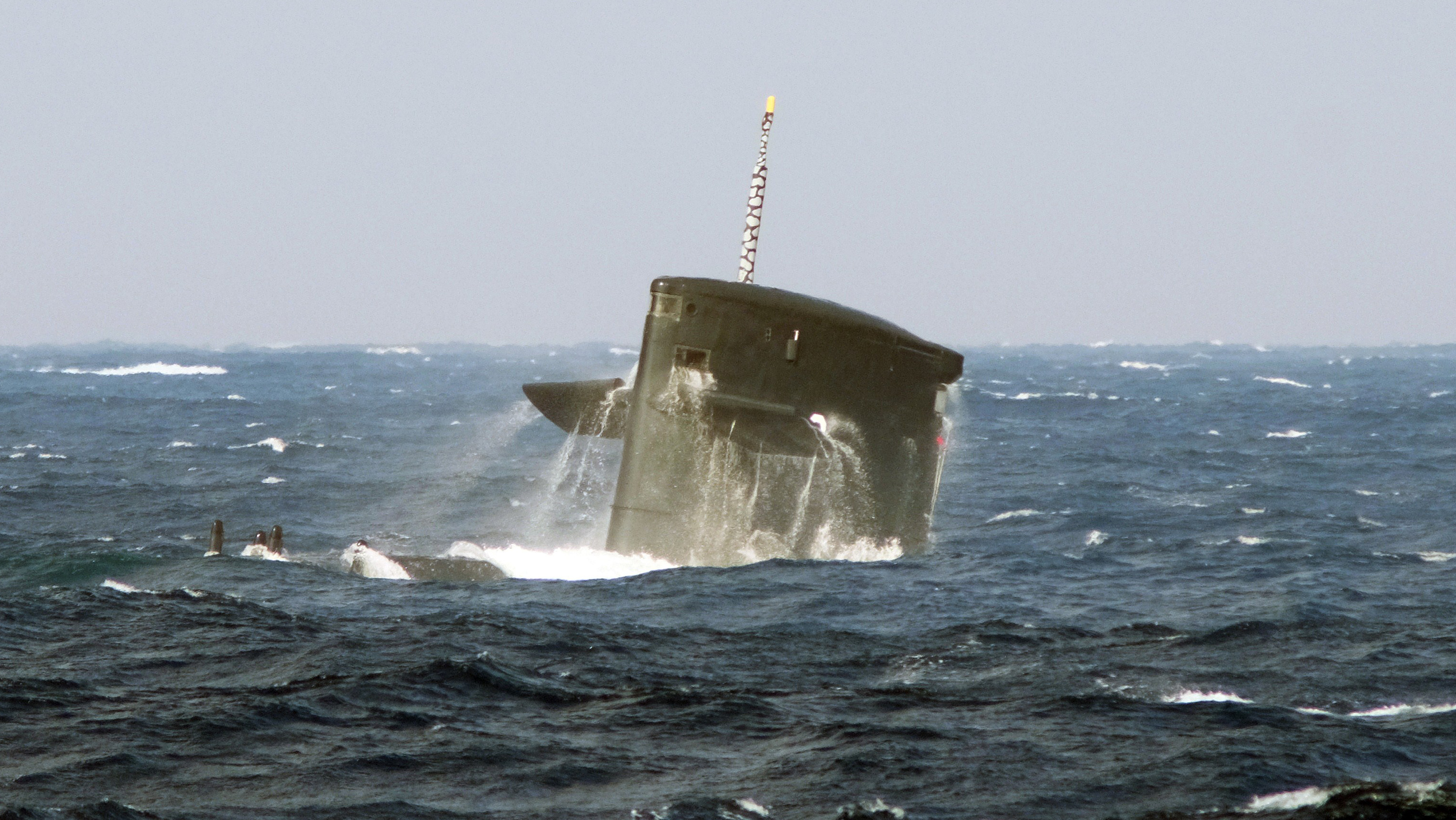
Kevin Noonan served in the US Navy from 1984–94 as a sensor operator (SENSO), briefly, in the P-3B Orion with VP-94 and for the remainder of his service as a SENSO in the S-3A/B with VS-41, VS-24, and VS-27.
Contact the editors: Tyler@thedrive.com and Brian@thedrive.com.
